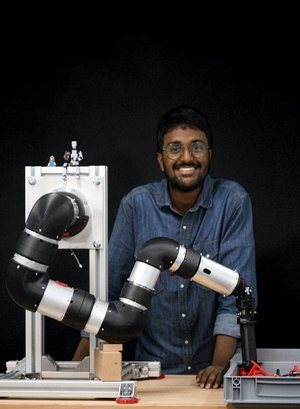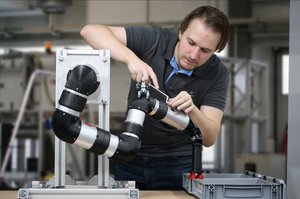Problem
Experience driven bottom-up design processes have been effectively used for humanoid robot design. However, such methods are sequential and lead to expensive iterations. The combined design of different sub-systems as a co-design problem allows one to identify non-intuitive yet efficient and better performing designs in the combined design space.
How does one translate the optimization results to physical robots?
How does a co-design approach compare with the bottom-up designed robot?
Objective
This project aims at evaluating an alternative top-down design strategy for developing robots. The project involves the robust co-design approach for visualising, interpreting, and realising optimal designs in the combined design space of morphology, actuation and control of robots. Through the usage of solution spaces, we show how one can trade-off one characteristic to another to obtain non-intuitive robot configurations.
Approach
This strategy involves task-specific design of robots tailored for the user requirements. This involves a cascaded optimization strategy resulting in constructing the so-called solution spaces. This enables us to interpret and trade-off different design variables in the design process. The robot developed experience-based is named the D-ROB and the robot resulting from the top-down approach is called the V-ROB.


